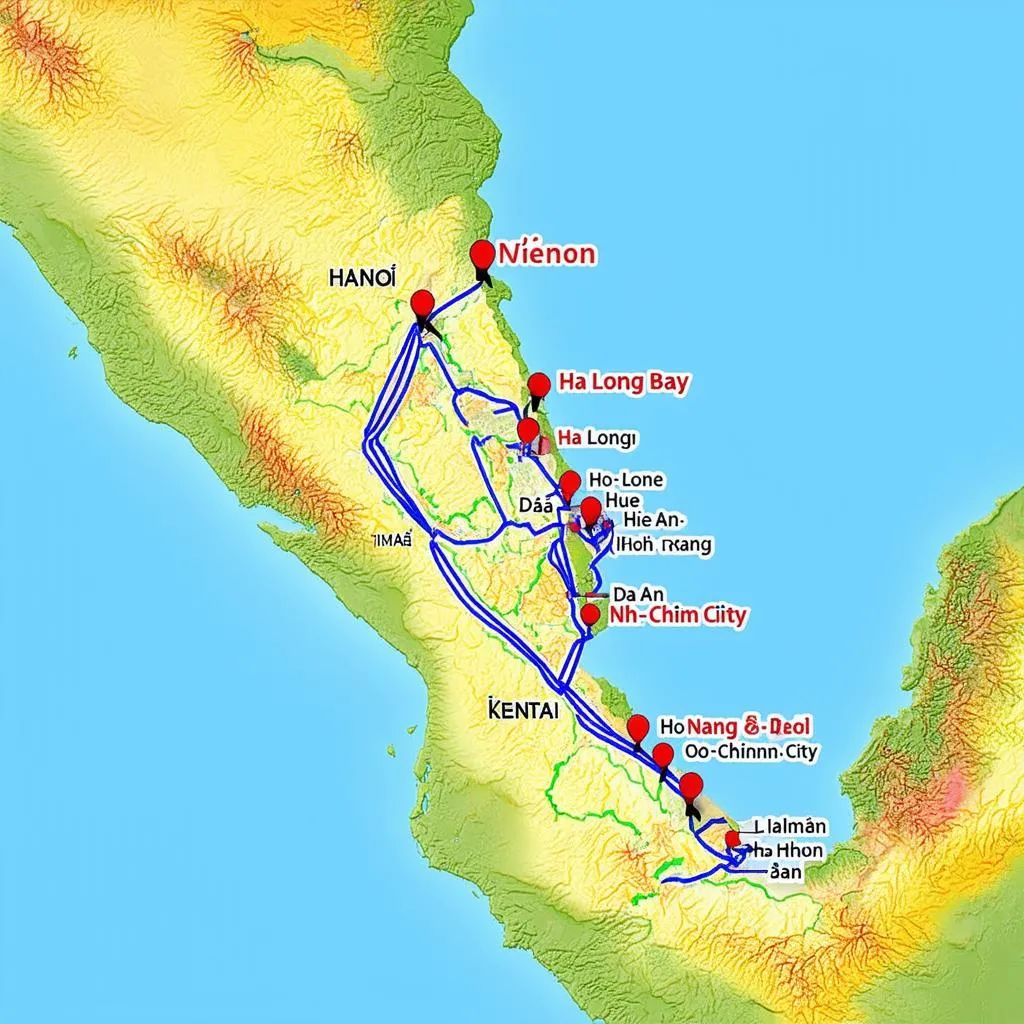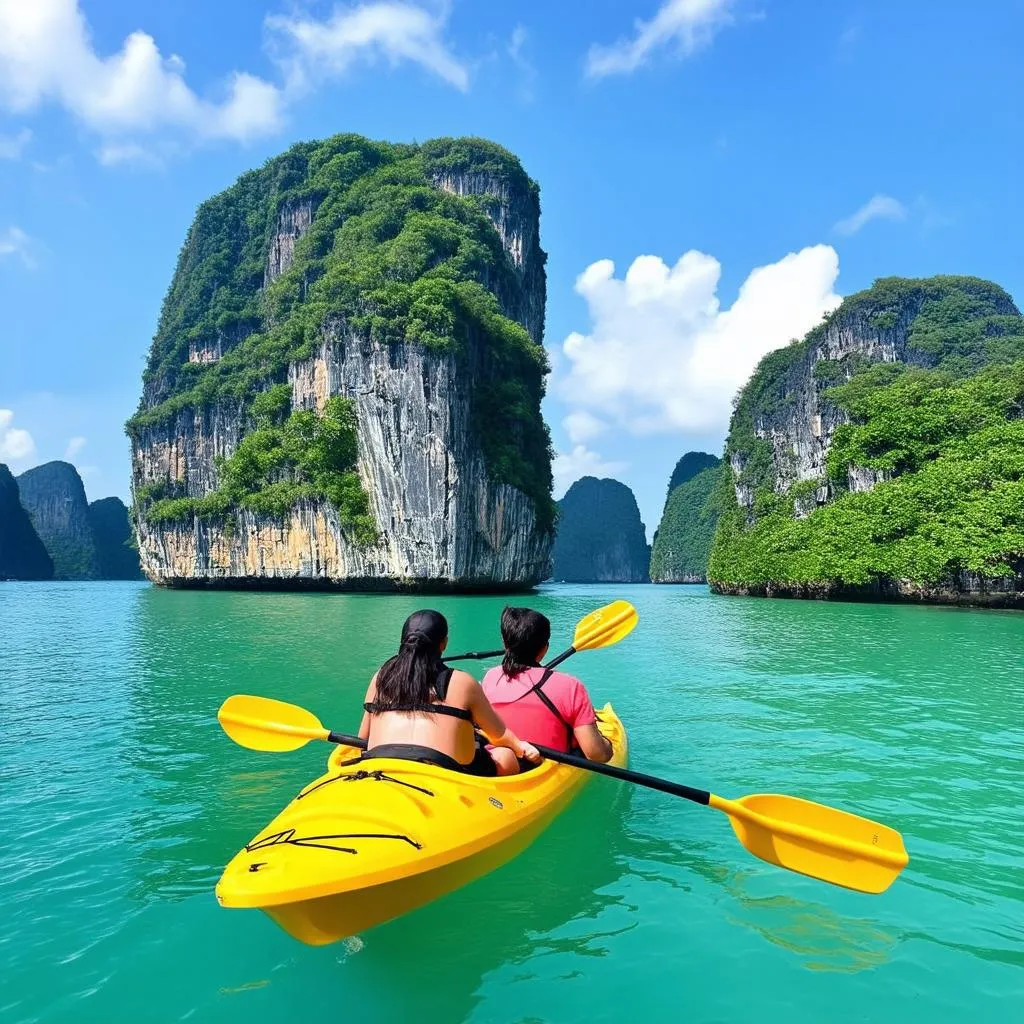Have you ever heard the saying, “It’s not about the destination, it’s about the journey?” Well, when it comes to tourist routes, that couldn’t be truer. Imagine yourself driving along the scenic Hai Van Pass in Vietnam, the wind in your hair, the sun on your face, and breathtaking views unfolding before you at every turn. That, my friend, is the magic of a well-planned tourist route.
What Exactly is a Tourist Route?
Simply put, a tourist route is a pre-determined path connecting various tourist attractions. It’s like a roadmap designed to maximize your travel experience and ensure you don’t miss out on any hidden gems. It can be as simple as a walking tour through the ancient streets of Hoi An or as elaborate as a cross-country road trip exploring the Mekong Delta.
Why are Tourist Routes so Important?
1. Efficiency is Key: Tourist routes help you make the most of your time, especially if you have limited vacation days. Instead of wasting precious hours getting lost or researching what to see next, you can follow a pre-determined itinerary and focus on soaking up the experience.
2. Hidden Gems Await: Tourist routes often include off-the-beaten-path locations and local favorites that you might not discover on your own. This adds an element of surprise and authenticity to your trip.
3. Cost-Effective Exploration: Many tourist routes offer packaged deals that include transportation, accommodation, and attraction tickets at a discounted price. This can save you a significant amount of money compared to booking everything separately.
4. Stress-Free Travel: Let’s be honest, planning a trip can be stressful. Tourist routes take the guesswork out of the equation, allowing you to relax and enjoy your vacation without worrying about logistics.
Planning Your Perfect Tourist Route: A Step-by-Step Guide
1. Define Your Interests: Are you a history buff, a foodie, or an adventure seeker? Knowing what you want to see and experience will help you choose the right route.
2. Set Your Budget: Tourist routes come in all shapes and sizes, from budget-friendly to luxurious. Determine how much you’re willing to spend to narrow down your options.
3. Research, Research, Research: Read travel blogs, browse online forums, and consult with travel agents to gather information about different tourist routes and what they offer.
4. Consider the Season: Some destinations are best visited during specific times of the year. For example, if you’re planning a trip to Sapa, Vietnam, the spring months (March-May) offer stunning views of rice terraces in bloom.
 Vietnam travel map with pins marking popular tourist destinations
Vietnam travel map with pins marking popular tourist destinations
Tourist Route FAQs: Your Burning Questions Answered
1. What are the different types of tourist routes?
Tourist routes can be categorized by theme (e.g., historical, culinary, adventure), mode of transportation (e.g., road trip, cruise, trekking), or geographical area (e.g., Northern Vietnam, Mekong Delta).
2. How do I find reputable tour operators offering tourist routes?
Look for operators with positive reviews, certifications from tourism boards, and a proven track record of safety and customer satisfaction. Travelcar.edu.vn is an excellent resource for finding trustworthy tour operators.
3. Can I customize a tourist route to fit my preferences?
Absolutely! Many tour operators offer customizable itineraries that allow you to personalize your experience.
Feng Shui and Your Journey: Inviting Positive Energy
In many cultures, including Vietnam, the principles of Feng Shui are believed to influence the flow of energy and bring good fortune. When planning your tourist route, consider incorporating some Feng Shui tips for a more harmonious journey.
- Choose auspicious dates for travel: Consult a traditional Vietnamese calendar to identify dates considered lucky for travel.
- Pack items in colors that attract positive energy: For example, red is associated with luck and prosperity in Vietnamese culture.
Beyond the Tourist Trail: Unveiling Vietnam’s Hidden Gems
While popular tourist routes offer a fantastic way to experience Vietnam’s iconic landmarks, consider venturing off the beaten path to discover some hidden treasures.
Explore the mystical caves of Phong Nha-Ke Bang National Park: This UNESCO World Heritage Site is home to some of the world’s largest and most impressive caves.
Journey to the remote villages of Ha Giang province: Experience the raw beauty of Vietnam’s northern highlands and immerse yourself in the unique culture of the local hill tribes.
Island hop around the Con Dao archipelago: Escape to pristine beaches, crystal-clear waters, and untouched natural beauty.
 Couple kayaking in Ha Long Bay, Vietnam
Couple kayaking in Ha Long Bay, Vietnam
For more information and inspiration on exploring Vietnam’s hidden gems, check out these resources:
Conclusion: Embark on Your Unforgettable Adventure
Choosing the right tourist route can transform your trip from ordinary to extraordinary. Whether you crave adventure, relaxation, or cultural immersion, a well-planned itinerary will guide you to unforgettable experiences. So, what are you waiting for? Start planning your dream trip to Vietnam today! And remember, the team at travelcar.edu.vn is here to help you every step of the way.